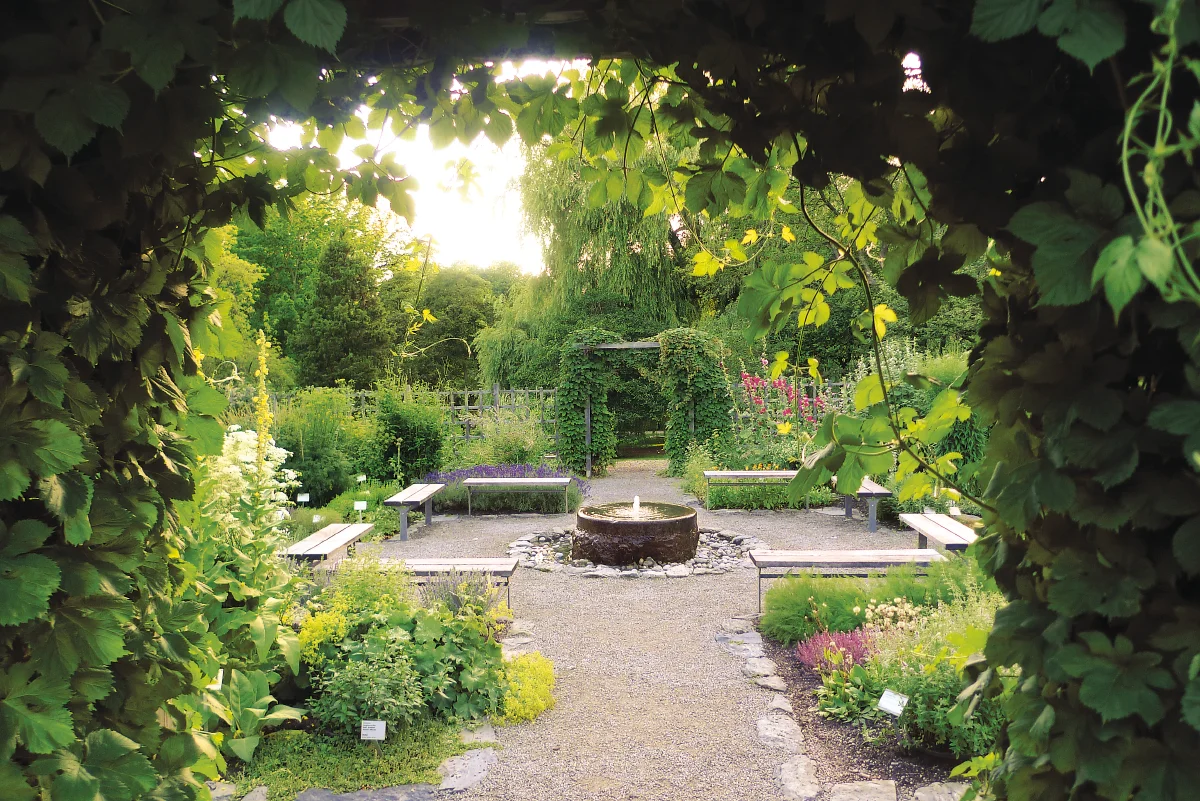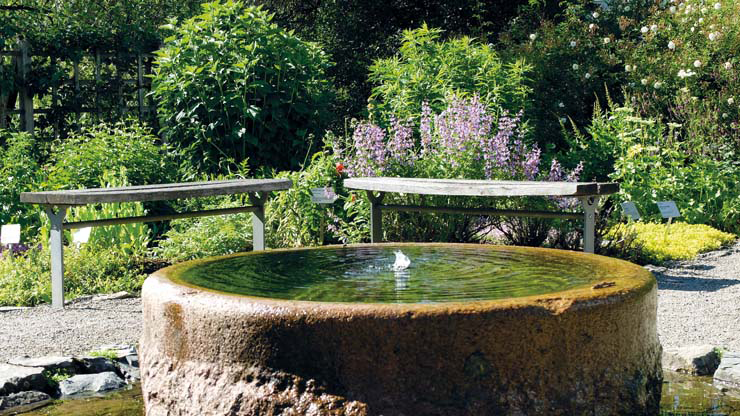
All the plants in the Herb Garden have been utilized by people, for a variety of purposes: Flavor and spice, medicine, fiber and dyeing. Culinary herbs stimulate appetite and aid digestion. Most culinary herbs have also been used as medicinal plants.
Many herbs are native to the Mediterranean and were brought north by monks in the Middle Ages. They taught people how to grow and use both medicinal and culinary herbs. Some of the plants escaped the confines of gardens and became established as wild plants in Norway.
A monastery garden of useful plants. Around the gazebo you will find American species, fiber plants, plants for dyeing and poisonous plants. The middle section is modelled after monastic cross-form gardens, and the plants here were common in European monastery and pothecary gardens.
At the low end of the Herb Garden there are raised beds with old species of food plants. The Herb Garden is at its best in late summer.

Thirsty people
The entrance portals in the Herb Garden are covered in hops. Hops contain a bitter ompound and have been used in beer brewing for hundreds of years. Hops were also used to aid sleep, and as ersatz tobacco.
Thirsty horses
The hollowed stone in the center of the garden – now functioning as a fountain – was originally located by the barn. It was the drinking trough for the hard-working horses when Tøyen Manor was a farm. The last horse was sent to pasture in 1960, and tractors took over the horses’ role.